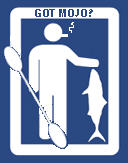|
|
Posts: 177
Location: Lake Forest, Illinois | http://www.wnrmag.com/stories/2008/aug08/waterworld.htm#3
Musky genetics
Our research to identify the lineage and genetic makeup of muskellunge statewide is progressing nicely. To date tissue samples have been collected and analyzed from more than 44 musky populations representing all the major water drainages throughout the musky’s native range.
Though we’ve emphasized testing native musky populations where these mighty fish naturally reproduce (Class 1 waters), we’ve also tested some populations where muskies have to be stocked to maintain a full complement of fish (Class 2). Further, we tested fish from waters where stocking is critical to maintain a viable musky population because the fish don’t reproduce on their own or don’t have much reproductive success (Class 3). This genetic analysis is conducted at the Molecular Conservation Genetics Laboratory at the University of Wisconsin-Stevens Point where we’ve now compiled genetic data from more than 1,440 muskies.
Results show there is a great deal of genetic diversity within Wisconsin musky populations, which is a good indicator of the genetic pool from which muskies draw. Greater diversity means greater chance of natural variation which protects a population from genetic weaknesses and recessive traits.
Our tests show a definite split in the genetic makeup of musky populations from the northeastern areas of the state (including the Upper Wisconsin and Upper Chippewa River drainage areas) and the northwestern portions. These distributions and differences do not correspond to contemporary fish management units suggesting these differences are more the result of long-term, natural variations.
One of two explanations or a combination of the two likely describe the current patterns we’re seeing. First, the Upper Chippewa River musky populations and the eastern Lake Superior populations may have historically been connected to the upper Wisconsin. This would explain the genetic heritage we are documenting in these fish. Secondly, the influence of stocking cannot be eliminated as a contributing influence if fish were planted from nearby hatcheries rather than relying on established fish management boundaries. For example, the musky populations found in the Upper Chippewa Management Unit are geographically closer to those raised at the Art Oehmcke State Hatchery in Woodruff than the Tommy G. Thompson Hatchery in Spooner. Despite this possibility, we believe this is a minor issue at present due to a high degree of unique genetic features in individual musky populations.
The differences we’ve observed among populations in western Wisconsin could be due to a combination of their shared ancestry and/or residual effects of the populations originating from a relatively small number of fish. A weak but significant group of muskellunge populations that seem to have slower growth rates has been observed in the genetic data. If this pattern holds up over subsequent data collection and analysis, this could be evidence of a genetic heritage to small/slow growth populations.
The research also suggests that each of the discrete musky populations in western Wisconsin may have grown over time from smaller numbers of isolated fish whose genetic makeup has more of an effect in shaping the genetic characteristics of Wisconsin muskies. Under these conditions, the makeup of muskellunge genetic characteristics is more the result of random chance than adaptation.
We expect the final round of data for these genetic heritage studies in Wisconsin musky will be collected, analyzed, summarized and released by fall 2009.
Extracted from an interim report on FY 2008 Wisconsin Muskellunge Genetic Research by Dr. Brian L. Sloss, Wisconsin Cooperative Fish Research Unit and Director of the Molecular Conservation Genetics Laboratory, College of Natural Resources, University of Wisconsin-Stevens Point.
| |
| | |
| that is extremely interesting, and if the full results remain consistent with this preliminary report indicating at least some populations of genetically slow-growing fish, it will have to have a dramatic impact on management and stocking practices in northwest Wisconsin.
thank you WI DNR and Dr. Sloss for doing the research in the first place, and keeping everyone updated on the progress! despite critics who would suggest otherwise, it's a good example that our resource stewards are being honest and straightforward with us.
thanks!
| |
| | |

Posts: 32945
Location: Rhinelander, Wisconsin | Interesting read, we'll have to see what the final test results are and what this all means for the long term across the State. | |
| | |

Posts: 1764
Location: Ogden, Ut | Ouch! First genetics, now throw in a bit of paleo-biology...I sure don't envy the amount of work involved in the analysis of this puzzle! Admittedly, it's much more entertaining from the periphery than having to do it. Have fun w/ it Dave!
S. | |
| | |
Posts: 177
Location: Lake Forest, Illinois | Interesting read for sure. I think it is awesome that the WDNR is releasing some of their findings as they go. I wonder if they would release the interim report in its entirety? "Extracted from an interim report on FY 2008 Wisconsin Muskellunge Genetic Research by Dr. Brian L. Sloss"
I am curious if the 'slow growth' muskies that they have identified are in lakes that only have 'slow growth' muskies? If they are in lakes with fast growing muskies as well, I wonder if they interbreed?
Also, would a lake with both growth types be considered, or not, as a brood stock lake? Lastly, are there simply two types, 'slow growth' and 'fast growth' muskies? | |
| |
|
 Preliminary genetic findings, i.e. Western WI Muskys
Preliminary genetic findings, i.e. Western WI Muskys Preliminary genetic findings, i.e. Western WI Muskys
Preliminary genetic findings, i.e. Western WI Muskys